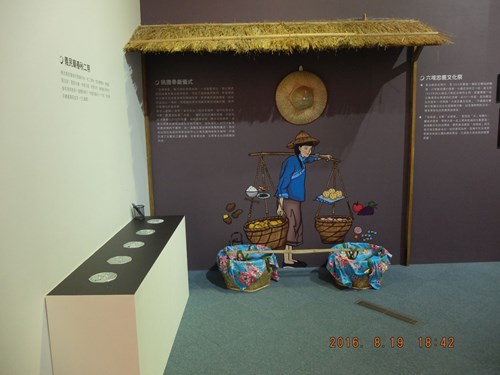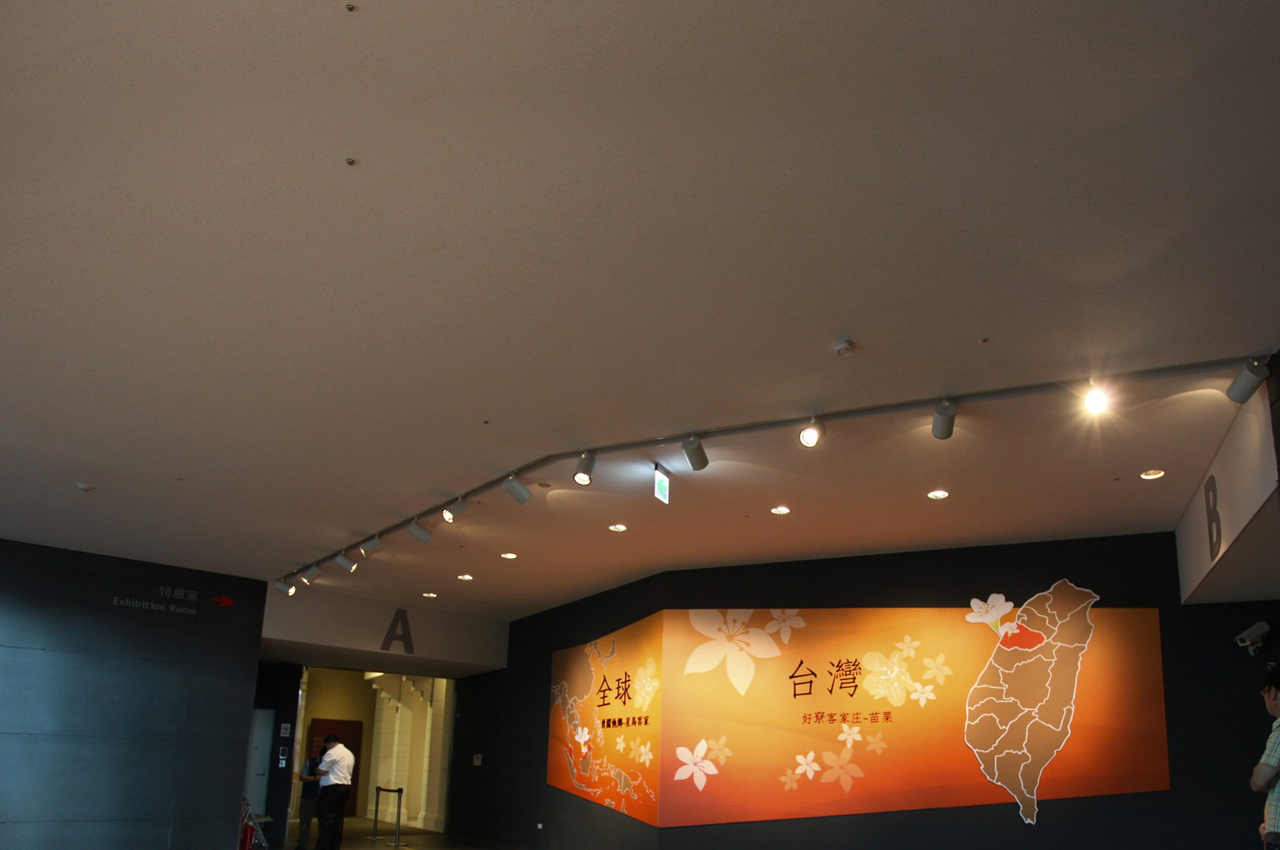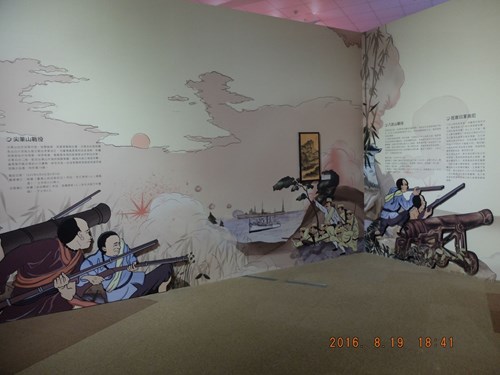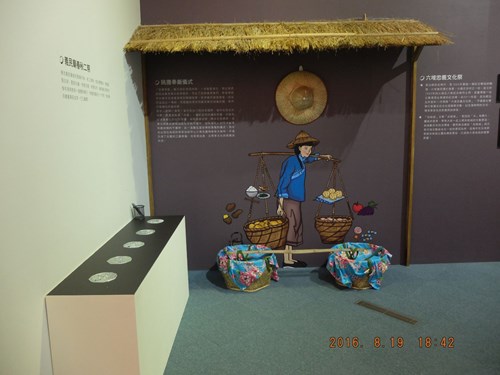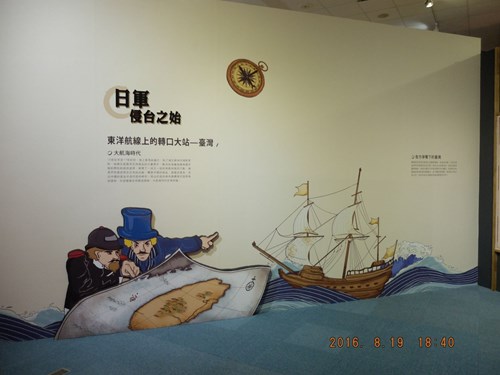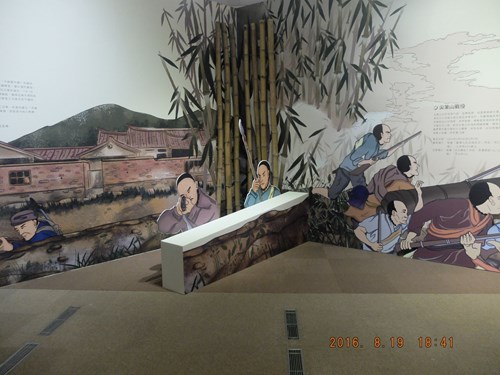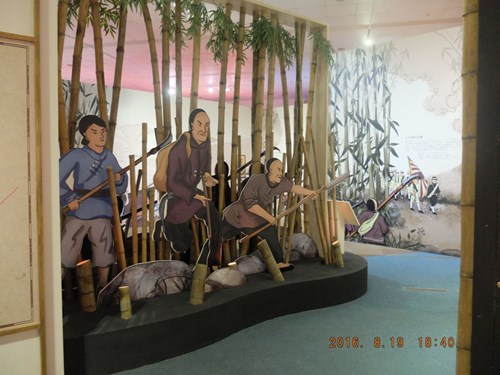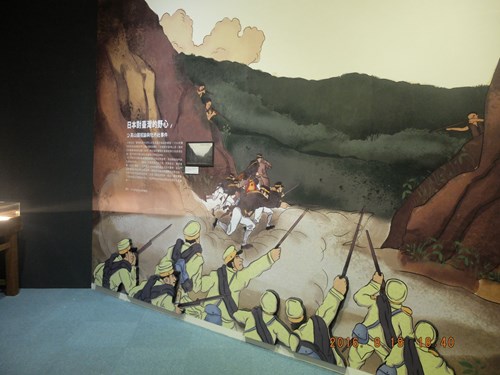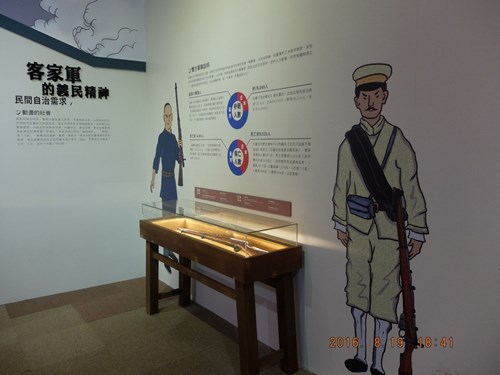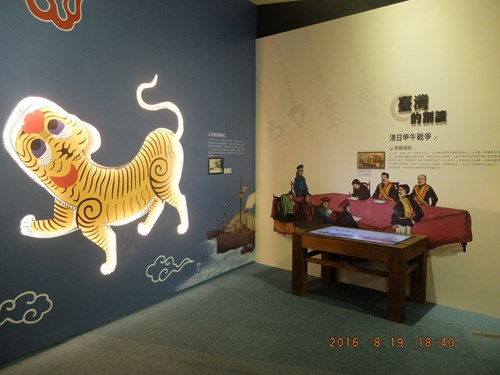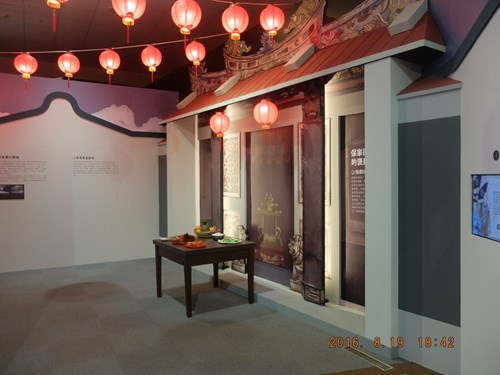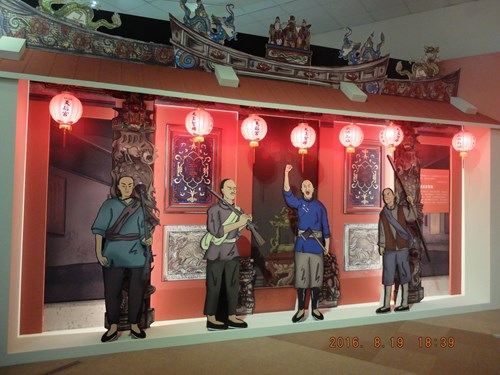Exhibition Review
2nd Special Exhibition Hall- Loyalty and Righteousness: Special Exhibition on the Defense of Taiwan in Yi-Wei War
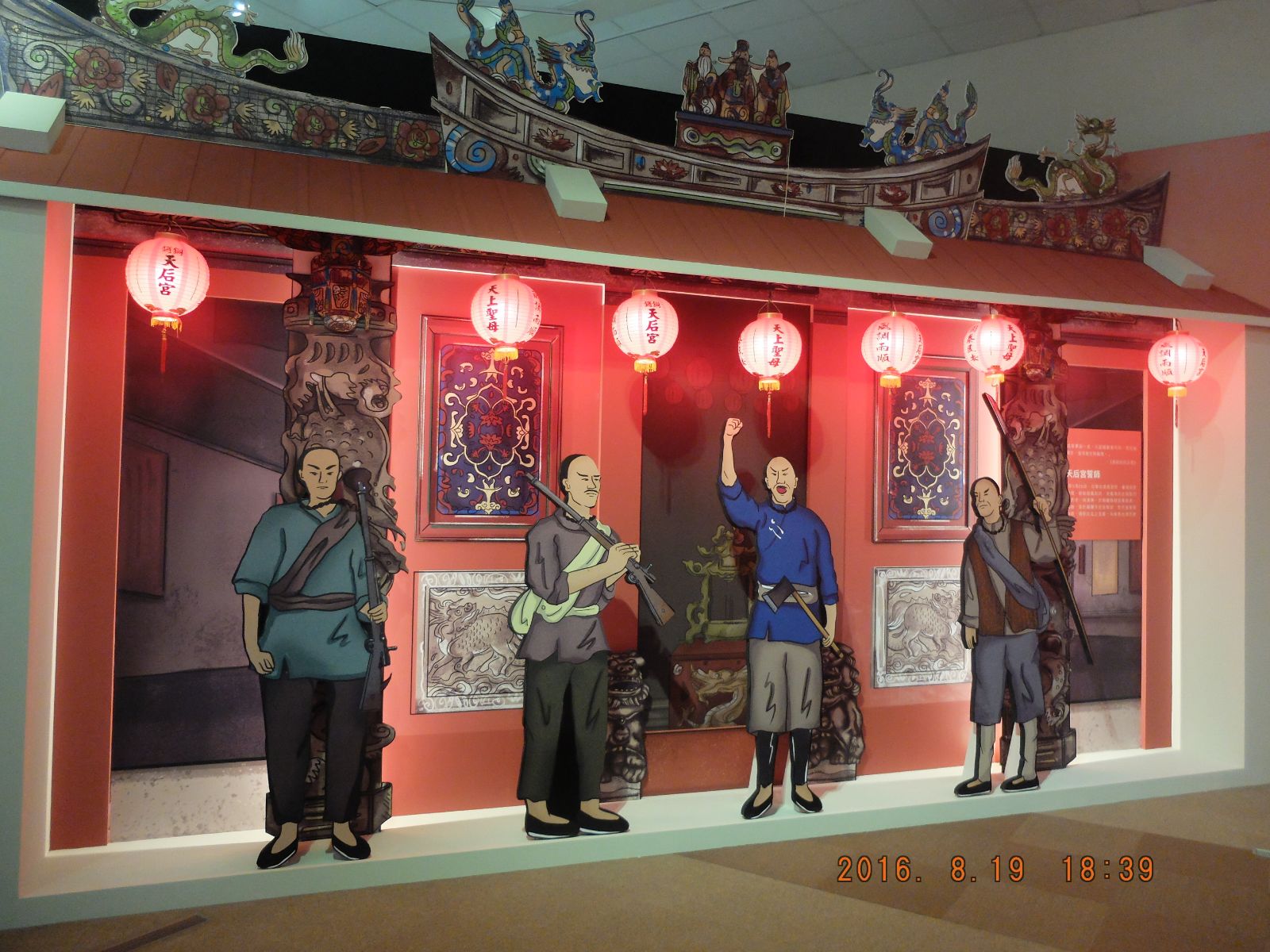
Loyalty and Righteousness: Special Exhibition on the Defense of Taiwan in Yi-Wei War
At: The Second Special Exhibition Hall (Taiwan Hakka Museum)
zhuyin[ㄔㄨㄥˊㄍㄠ]pinyin[chonggao]
lofty; high; esteemed; noble; sublime; saintly
loyalty and righteous
Prologue
The Yi-Wei Defense of Taiwan refers to the war during May 29 through November 26, 1895 which is called Yi-Wei War historically (also known as Yi-Wei Battle, the Japanese Invasion of Taiwan and Yi-Wei Incident). After defeated in the Sino-Japanese War, Qing Dynasty was forced to cede Taiwan and Penghu Islands to Japan through the Treaty of Shimonoseki; nevertheless, the Japanese army aiming to take control of Taiwan was confronted by Taiwanese Yimin militia; almost every ethnic group was involved in it, among which the Hakka people devoted the most manpower and resources in number into the battle. The war started from the northern Taiwan including Taoyuan, Hsinchu and Miaoli to the Liugdui Hakka settlements of Kaohsiung and Pingtung in southern Taiwan; regardless of the gender, everyone dedicated themselves to the fight which affected all across Taiwan for two decades.
The exhibition will take the visitors back to the battlefield of the Yi-Wei War,
making an in-depth examination on the battle routes from the northern to southern Taiwan, acquiring a deeper understanding for the spirit of perseverance and resilience of the Hakka ethnic group to protect their homeland through the Hakka warriors who were valorous and skillful in warfare; now that more than a hundred years passed, despite the fact that the memories of the war have faded away, we could still recall the faith and bravery for safeguarding their homeland and promote Hakka spirit via the inherited folk customs and worshiping rituals.
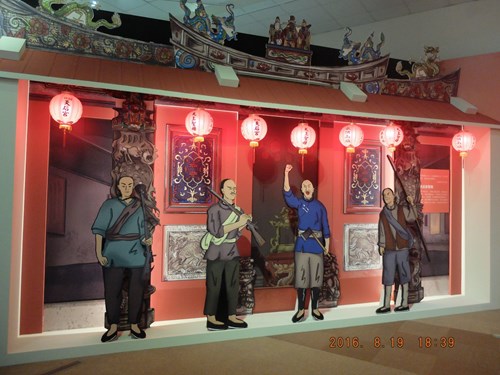
Japanese Invasion and the cession of Taiwan
At the end of 16th and the beginning of 17th century, the sea commerce started to prevail worldwide; Taiwan was located at the favorable geographical position for trading with China, Japan and Southeast Asia etc. Hence, it gradually became the transit station every country were eager to acquire; the neighboring Japan also manifested its ambition through sending messengers to demand tributes from Taiwan, and even invaded Taiwan through military force with the hope of developing Taiwan into an trading base of Japan with China.
After the signing of Treaty of Shimonoseki due to the defeat in Sino-Japanese War, Qing Dynasty ceded Taiwan and Penghu to Japan. Being resistant to be divided as a colony to Japan, Taiwanese people established The Republic of Formosa, as well as appealing to ethnic awareness to acquire international aid, nevertheless, they didn’t succeed in obtaining strong assistance from world powers; therefore, Taiwanese people decided to revolt through armed forces, so the Yi-Wei War broke out.
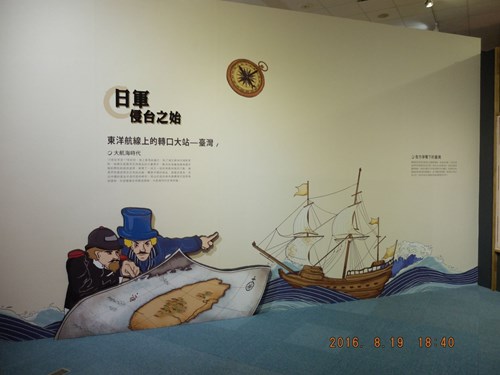
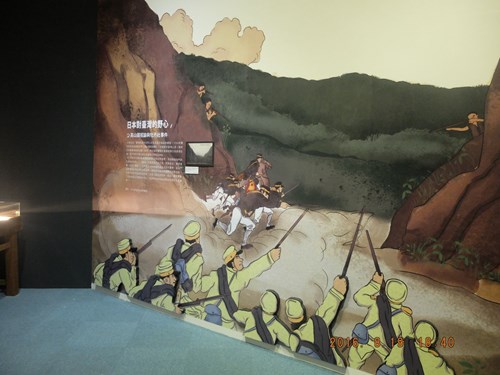
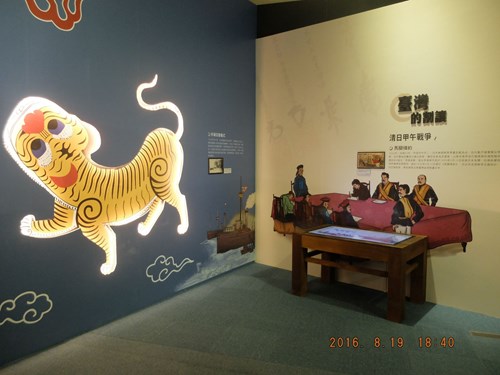
The widespread revolts against Japan
The Japanese army landed at Aodi on May 29, 1895, smoothly marched into and be stationed at Taipei City, yet encountering the fierce resistance of the Hakka-led Yimin militia in Taoyuan, Hsinchu and Miaoli areas. The conflicts were sparked since then and spread all the way down to the southern Taiwan, inclusive of Hukou Township War, An-ping Township Battle, Jianbi Mountains Battle, Bagua Mountains Battle, Bu-yue Building (Liugen Village) Campaign and the Burning Village (Huoshaozhuang) Battle etc., although the Yimin army was defeated eventually due to the superior Japanese military strength, their spirit of loyalty and bravery spirit to protect their homeland until death has left a far-reaching imprint in Taiwan history.
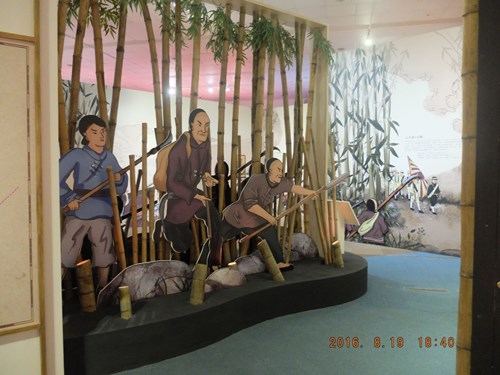
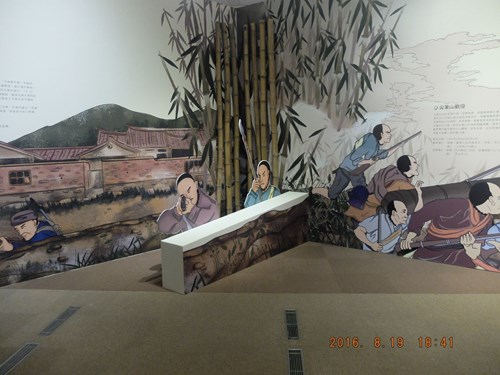
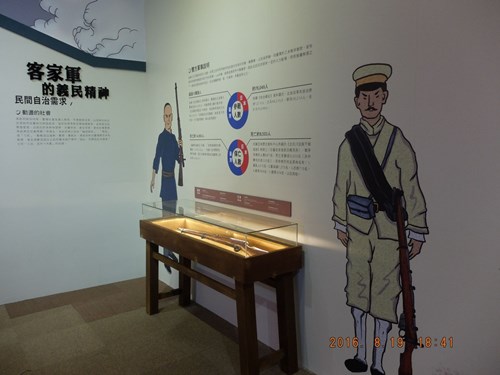
The Yimin spirit of Hakka militia
There was growing unrest in Taiwanese society under the reign of Qing Dynasty. Hence, the general public formed private groups to shield themselves, among them the Hakka people systematically integrated ethnic groups and settlements together to train their physiques with martial arts in slack farming seasons and offer their strengths to defend their homeland when coming across incidents, becoming important forces for pacifying the society; the Hakka militia even helped the Qing Dynasty to put down social upheaval, for instance, the Zhu Yigui and Lin Shuang-wen incidents, as a result, Qing Dynasty praised and honored Hakka Yimin for multiple times, prompting the building of Yimin temples and fostering the folk belief.
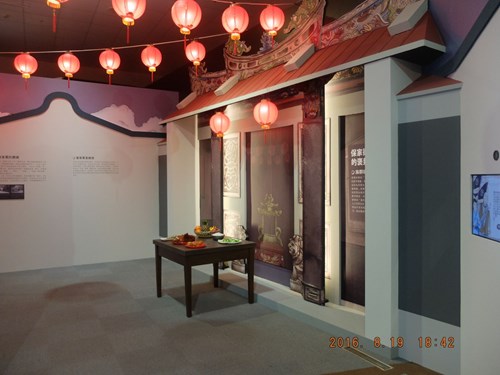
The inheritance of Yimin belief, folk customs and worshiping rituals
The Yimin army who sacrificed themselves to protect their homeland mostly had blood or geographical relationships. In order to commemorate them, the Hakka people not only regard them as heroes, esteem them as loyal and brave great uncles and Yimin gods, but also respect them as ancestors, worshiping them with offerings annually, therefore, they become the existence like gods and ancestors, the symbol and patron saints of Hakka spirit. In addition, Hakka people continue to appreciate them through ceremonious worshiping rituals every year, for instance, Ghost Festival (Zhongyuan Pudu), worshiping rites in spring and autumn at Yimin temples, as well as lively and interesting festival activities, for example, Pole-firecrackers series activities, Three Offerings, and Offerings with a Carrying Pole etc., not only commemorating their sacrifices, but also connecting the relationships and passing on the Hakka spirit of loyalty and bravery to generation after generation.
